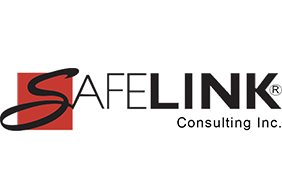As we kick off the new year, employers need to mark their calendars for an important regulatory deadline. Starting January 2nd, employers have the green light to begin submitting their injury and illness data to the Occupational Safety and Health Administration (OSHA). This annual submission is a crucial step in maintaining transparency, ensuring workplace safety, and complying with regulatory requirements.
Why is it necessary to submit injury & illness data to OSHA? The data submitted to OSHA helps in the development of policies and initiatives aimed at improving workplace safety and health. By providing accurate and timely data, employers play a vital role in contributing to a safer and healthier work environment for all employees.
Submitting injury and illness data to OSHA is a straightforward process that can have a significant impact. It not only fulfills a legal obligation but also demonstrates a commitment to ensuring the well-being of employees. Employers should take this opportunity to review their recordkeeping practices and ensure that they are accurately documenting all workplace injuries and illnesses.
The ITA will begin accepting 2023 injury and illness data on January 2, 2024. The due date to complete this submission is March 2, 2024. The submission requirement is annual, and the deadline for timely submission of the previous year's injury and illness data will be on March 2 of each year.
Failure to submit the required injury and illness data can result in non-compliance penalties and more importantly, can hinder the efforts to identify and address workplace safety concerns. Employers should prioritize this submission as part of their ongoing dedication to maintaining a safe and healthy workplace.
To streamline the submission process, employers can take advantage of OSHA's secure website, where they can electronically submit their injury and illness data. It's a convenient and efficient way to fulfill this important obligation and contribute to the collective effort of promoting workplace safety. The data must be electronically submitted through OSHA's Injury Tracking Application (ITA).
There are 3 ways to submit the data: (1) webform on the ITA, (2) submission of a csv file to the ITA, or (3) use of an application programming interface (API) feed.
Certain establishments must electronically submit to OSHA detailed information about each recordable injury and illness entered on their previous calendar year's OSHA 300 Log and 301 Incident Report forms (29 CFR 1904.41). This includes the date, physical location, and severity of the injury or illness; details about the worker who was injured; and details about how the injury or illness occurred. Keep in mind that OSHA upholds strict privacy standards. Avoid including personal identifiers in the submitted data, ensuring compliance with confidentiality requirements.
Taking the initiative to submit injury and illness data to OSHA not only fulfills regulatory obligations but also contributes to the overall safety and well-being of your workforce. By actively participating in this annual process, employers play a vital role in shaping the future of workplace safety. Don't forget—January 2nd marks the beginning of the submission period, so let's kick off the year on the right foot by prioritizing the health and safety of our employees. Discover more about OSHA's Update to Injury & Illness Tracking.
Learn more about OSHA's Update to Injury & Illness Tracking.
If you have any questions about safety compliance or need OSHA recordkeeping training, please contact SafeLink Consulting. Discover more about the dental solutions we offer.
How to Achieve OSHA Compliance for the Dental Practice
OSHA Compliance for the Dental Laboratory
Learn more about what SafeLink Consulting can do to help your business with compliance services, including safety compliance, to meet OSHA training requirements and quality system consulting to meet FDA compliance.
Get notification when new regulatory compliance training courses are added plus upcoming events by subscribing to our email news.







Leave Comment